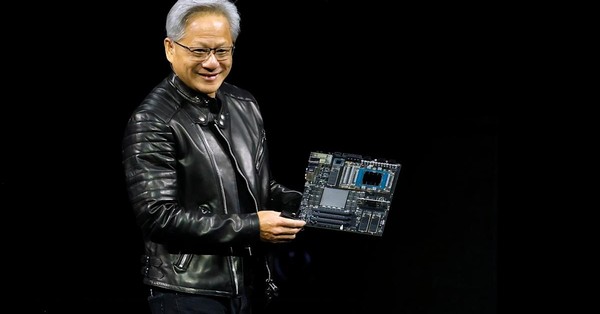Bitcoin’s environmental footprint rivals entire nations, while its practical applications remain limited. Meanwhile, AI is revolutionising digital security and analysis. Could intelligent systems be the force that either rehabilitates cryptocurrency or ultimately exposes its fundamental flaws? This exploration examines how these two technological forces are colliding, with potentially transformative consequences for digital finance.
AI vs Bitcoin: Exposing the incredible wastefulness of proof of work
When you get right down to it, Bitcoin is an incredible waste of resources. Essentially, to mine Bitcoin you waste a bunch of energy solving a useless mathematical puzzle. How sensible is that? According to the Cambridge Centre for Alternative Finance, Bitcoin mining consumes approximately 127 terawatt-hours of electricity annually — more than the entire country of Norway. This consumption results in an estimated carbon footprint of 65.4 million tons of CO2 annually, comparable to the emissions of Greece. It used to be that trading all cryptocurrencies was wildly inefficient, requiring proof of work (PoW), but newer systems like Ethereum have at least improved this by moving to proof of stake (PoS). This has helped reduce energy consumption, but they may have created a “Lloyds of London” scenario that could end in tears for the PoS folks — potentially concentrating power among large token holders and creating new forms of centralisation, as well as terrible losses.
Not actually a currency: Bitcoin’s practical failures
As you can tell, I am not a fan of cryptocurrencies in general. I get that people don’t like banks — they are blood-sucking organisations extracting rent from their customers. I don’t trust them either, but I dislike the mindless use of vast resources even more. I think you must admit that cryptocurrencies are not really a replacement for currencies. They can’t hope to process all the transactions that happen in the world. If my wife went out Christmas shopping with Bitcoin, the network would have melted down by lunchtime. Even after more than a decade of development, the Bitcoin blockchain can process only about seven transactions per second — a stark contrast to Visa’s capability of handling thousands of transactions per second. These limitations suggest that cryptocurrencies in their current form function more as speculative assets than viable currencies — digital gold rather than digital cash. Even with second-layer solutions like the Lightning Network, scaling remains a significant obstacle to widespread adoption for everyday transactions.
Blockchain: a brilliant idea looking for an application
Now blockchain, from a theoretical point of view, is a brilliant invention. As a mathematician, I thought it was very cool when it came out. I think it’s a wonderful idea, but it was in search of an application. What I didn’t appreciate, due to my naivety, was that the big initial application was crime. When you ransomware a US-based police department, you want to get paid in crypto. It’s somewhat ironic that ‘ransomwaring’ police departments seem so easy. I am guessing it has gotten harder now. So now cryptocurrencies have a purpose, and it led one person to joke that crypto transactions should be called “prosecution futures”. According to Chainalysis, criminal activity accounted for approximately $51 billion worth of cryptocurrency transactions in 2024, though this represents a declining percentage of overall crypto transactions. There are estimates that crypto’s use is no longer predominantly for illicit activity. However, most sources reporting this data have strong incentives to minimise the amount of such use. The pseudonymous nature of cryptocurrency transactions, combined with their global, borderless operation, created an environment where connecting digital wallets to real-world identities often presents significant challenges for law enforcement.
AI vs Bitcoin: Cleaning Up Crypto’s Dark Side and disrupting the crypto ecosystem
So now we have a resource-wasting cesspool of a technology, loved by Ayn Rand fanboys and people like me who hate banks. Can we clean this mess up? Well, AI has the ability to track bad coins. For cryptocurrencies with online public transaction ledgers, we can, in theory, track tainted money. You can create a database of “bad” coins. If major countries make the possession of these coins equivalent to possessing stolen goods, it would cause people to become wary about taking possession of coins. You can also check if a wallet holder has a reputation for passing tainted coins. If a user is passed tainted money, they can transfer it to law enforcement for redistribution back to the victim. AI can help automate this checking and tracking. If brought in by large police departments, such as the FBI, Interpol and the Met, we can build a way of discouraging the use of crypto from dubious sources. Even if you use jumbling methods, a coin could get a percentage badness and you need to split your coin and had over the bad bit to the law.
Several startups and government agencies are already developing AI-powered blockchain analysis tools. Companies like Chainalysis and Elliptic use machine learning algorithms to track illicit cryptocurrency flows, while government agencies, including the IRS and FBI in the USA, have invested in similar technologies.
Gresham’s Law: how AI could undermine cryptocurrency’s value
This cleans up the money and has a new, more nefarious effect: Gresham’s Law. You may have fallen asleep in economics class, but Gresham’s Law (dating back to 1558) is an economic principle that states, “bad money drives out good”. It suggests that when two forms of currency co-exist in circulation, where one is considered “good” (reliable, valuable) and the other “bad” (counterfeit, debased) — the bad money will eventually displace the good. This occurs because people tend to spend bad money and hold onto the good, leading to a reduction in the circulation of genuine currency. Now , different Bitcoins could become worth different amounts, but as you can’t tell what the wallet might send you (or at least you need to trust the wallet holder), it would start making using cryptocurrencies harder to use, and lead to a destruction of value for all Bitcoins. Without AI automating a huge amount of this work and working with law enforcement, this would be impossible to do easily right now. Cryptocurrency advocates argue that such measures would fundamentally undermine the censorship-resistant nature of decentralised currencies. However, proponents of stronger regulation suggest that some degree of compliance with legal standards is necessary for any financial system to operate legitimately in the global economy.
Beyond Bitcoin: smart contracts and AI’s constructive role
So, given my rant about blockchain, does it have a purpose? I think maybe it does. Recently, the language Solidity has been developed for making smart contracts. These contracts allow for trusted behaviour to occur. The problem is this is a programming language, and that isn’t always easy for people to write and understand. However, AI could provide an answer to help make the process much easier for all parties to use. AI can be used to help draft smart contracts in Solidity and help check and explain them to potential users of smart contracts. You can imagine specialised agentic AI agents, with libraries of standard Solidity code, that can pull that code and create complex contracts that people can use. Several projects are already exploring this intersection. OpenZeppelin, a leading smart contract security firm, has developed AI-powered tools to analyse smart contracts for vulnerabilities. Meanwhile, research initiatives like DeepSEA at Yale University are using formal verification and machine learning to automatically generate provably correct smart contracts. With generative AI’s advances in code generation and natural language understanding, we could soon see systems that:
- Translate plain-language agreement terms into secure Solidity code
- Automatically audit contracts for security vulnerabilities
- Generate human-readable explanations of complex smart contract behaviors
- Create visual representations of contract execution paths
- Provide interactive simulations of contract outcomes based on different inputs
These AI-powered tools could democratise access to smart contract technology, allowing non-technical users to benefit from blockchain-based agreements without requiring specialised programming knowledge. Rather than replacing blockchain technology entirely, AI could help refine it toward more productive applications.
AI vs Bitcoin: Fighting Blockchain’s Carbon Footprint
While Ethereum has made significant strides in reducing energy consumption through its transition to proof-of-stake, Bitcoin’s environmental footprint remains problematic. According to the Bitcoin Energy Consumption Index, a single Bitcoin transaction uses as much energy as an average US household consumes in 75 days. AI might help address this challenge by developing more efficient consensus mechanisms or by optimising existing ones. Machine learning algorithms could potentially identify patterns in blockchain operations that allow for reduced computational requirements without compromising security. Additionally, AI-powered analytics could help guide regulatory approaches that incentivise more sustainable practices in cryptocurrency mining. By accurately measuring and attributing environmental impacts, these systems could support carbon taxation or other policies that internalise the environmental externalities of cryptocurrency networks.
Will AI kill Bitcoin or transform it?
The collision between AI and cryptocurrency represents a technological inflection point with significant implications for the future of digital finance. While AI may help address some of cryptocurrency’s most significant challenges — from energy consumption to criminal exploitation — it may simultaneously undermine some of its core value propositions. If AI-powered regulatory systems can effectively track illicit cryptocurrency transactions, the perceived anonymity benefit of cryptocurrencies diminishes. Similarly, if AI enables more efficient centralised payment systems, the comparative advantage of decentralised alternatives may narrow. What is clear is that the resource-wasting aspects of cryptocurrency cannot continue indefinitely in a world increasingly concerned with environmental sustainability. Either cryptocurrency systems will evolve toward more efficient models, or they will face increasing regulatory and market pressures. For those of us who appreciate the mathematical elegance of blockchain, but question its practical applications, the AI-blockchain intersection represents a fascinating evolutionary crossroads. Perhaps AI won’t kill Bitcoin outright, but it may force a fundamental transformation of cryptocurrency toward more sustainable, practical, and socially beneficial applications.
After all, brilliant ideas deserve better applications than enabling ransomware and burning electricity to solve useless puzzles.
First published by Dygital Bytes









































